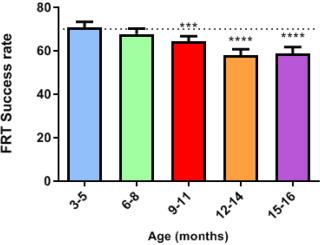Modeling chronic cervical spinal cord injury in aged rats for cell therapy studies |
| |
| Affiliation: | 1. Unidad de Producción y Reprogramación celular (UPRC), Red Andaluza de Diseño y Traslación de Terapias Avanzadas (RAdytTA), 41092 Sevilla, Spain;2. Grupo de Neurociencia Aplicada, Instituto de Investigaciones Biomédicas de Sevilla (IBIS), 41013 Sevilla, Spain;3. Programa de Doctorado en Biología Molecular, Biomedicina e Investigación Clínica, Universidad de Sevilla, Sevilla, Spain;4. Departamento de Biología Celular, Genética y Fisiología, Universidad de Málaga, 29071 Málaga, Spain;5. Centro de Investigación Biomédica en Red de Bioingeniería, Biomateriales y Nanomedicina, (CIBER-BBN), 29071 Málaga, Spain;6. Grupo de Física Interdisciplinar, Departamento de Física Aplicada III, ETS Ingeniería, Universidad de Sevilla, 41092 Sevilla, Spain;7. Unidad de Coordinación, Red Andaluza de Diseño y Traslación de Terapias Avanzadas (RAdytTA), 41092 Sevilla, Spain;8. Departamento de Neurocirugía, Hospital Universitario Virgen del Rocío, 41013 Sevilla, Spain |
| |
| Abstract: | 
With an expanding elderly population, an increasing number of older adults will experience spinal cord injury (SCI) and might be candidates for cell-based therapies, yet there is a paucity of research in this age group. The objective of the present study was to analyze how aged rats tolerate behavioral testing, surgical procedures, post-operative complications, intra-spinal cell transplantation and immunosuppression, and to examine the effectiveness of human iPSC-derived Neural Progenitor Cells (IMR90-hiPSC-NPCs) in a model of SCI. We performed behavioral tests in rats before and after inducing cervical hemi-contusions at C4 level with a fourth-generation Ohio State University Injury Device. Four weeks later, we injected IMR90-hiPSC-NPCs in animals that were immunosuppressed by daily cyclosporine injection. Four weeks after injection we analyzed locomotor behavior and mortality, and histologically assessed the survival of transplanted human NPCs. As rats aged, their success at completing behavioral tests decreased. In addition, we observed high mortality rates during behavioral training (41.2%), after cervical injury (63.2%) and after cell injection (50%). Histological analysis revealed that injected cells survived and remained at and around the grafted site and did not cause tumors. No locomotor improvement was observed in animals four weeks after IMR90-hiPSC-NPC transplantation. Our results show that elderly rats are highly vulnerable to interventions, and thus large groups of animals must be initially established to study the potential efficacy of cell-based therapies in age-related chronic myelopathies. |
| |
| Keywords: | SCI Myelopathy Pluripotent stem cells iPSCs NPCs Elderly Advanced therapies |
| 本文献已被 ScienceDirect 等数据库收录! |
|

